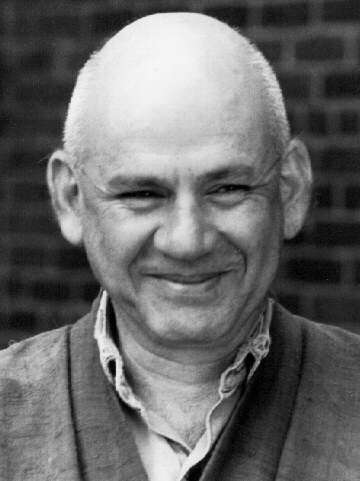
The Form of Our Life Lecture by
|
At the end of a recent sesshin, a student said, "You know, if we didn't have all that formality in the zendo, there wouldn't be anything to this at all. It's like the emperor's clothes." From one point of view that statement looks like a very accurate statement. Although we talk about the form of Zen, there is no special form. Since Zen is nothing more than the practice of our life, it follows that whatever forms our life takes can be the forms of practice. Even though that is so, it doesn't mean that we are always aware of them as such. So our predecessors developed certain recognizable forms like zazen, bowing, and chanting, and holding our hands this way and our bowls this way. And when we enter into these forms, we can recognize practice. We can see it because it has a shape. So we call it formal practice and we can use it day after day and find our way in it. We can touch it, embrace it. But because formal practice presents such a contrast to ordinary worldly life, it's sometimes hard to know how to bring forth the mind of practice within the forms of everyday life. How can we do zazen all day without crossing our legs? |
| In a lay community we are always concerned
with how to initiate practice using the forms that are at hand. How can we
use the common forms we encounter in our ordinary lives at work, within
our family, and amidst the myriad complications of present day life? Our
complete life of practice is to merge the spirit of formal practice with
the forms of the dynamically changing world. Once I suggested to a student
that she sit zazen in a chair because she was having trouble sitting on
the floor. But she didn't want to do it because doing so she would feel
compromised. A common complaint is that it's hard to find time for zazen
in our busy lives. But if we know how to sit zazen in a chair, we can do
it anywhere, especially since we spend so much time in chairs. Our postures are indicative of our attitudes and states of mind. Standing in line at a Safeway check stand, grumbling about how slowly the line is moving, I give up, shift my weight evenly to both feet, adjust my posture and, following my breath, return to myself. Sitting in the car waiting for the signal to change, I sit up straight, let go of my grip on the wheel, put my hands in my lap and, taking a few deep breaths, return to zero. Simple awareness of posture and centering within each activity is a fundamental mindfulness practice. And if actualized in the most common, everyday situations, it can be the basis of a calm foundation of mind. The way we move within time is a kind of dance. We are always keeping time within one rhythm or another. Music, of course, is exemplary. One reason we love music so much is that it's so complete and it always comes out right. The notes harmonize with one another in time to make a beautiful, complete, ideal statement; not like our daily life where the rhythms are more subtle or hard to find or are constantly being interrupted or changed in ways that aren't so easy to handle. In music, as in our dance of life, if we get ahead of time or behind, we have a problem. One remarkable example of Suzuki Roshi's life was that he never seemed to be in a hurry. No matter how much pressure he was under, I don't remember ever seeing him in a hurry. I don't mean to imply that he was a perfect person. He was always the first to acknowledge his faults, which is one reason why we trusted him. But he had a way of not wasting time. He seemed to be settled in time almost casually, never ahead or behind. In his quiet way, fully filling each moment, he appeared to be tapped into some fundamental rhythm which was independent of circumstances, yet totally one with them. The tempo of monastic practice, with its constantly changing rhythms, is somewhat relentless. Throughout the day one must let go of the present activity and take on the next one. It's not hard if you allow yourself to adjust to the changes. But if you don't, then you become your own obstacle. Monastic practice helps us maintain a life of non-attachment in the present, but there are not as many variables in that practice as there are in our city life. For instance, how do you keep a clam mind when there are demands from too many sources at once? How do we keep our composure in the face of the world's atrocities without being overwhelmed? There can be many ways to deal with these questions, but we should allow ourselves the opportunity to bring forth a response based on a mind of equanimity. Our zendo practice can give us a way of being in touch with our fundamental self, but the practice must find its completion in our everyday activity of "drawing water and carrying wood." Dogen Zenji says that Genjokoan is zazen as it is extended into our life. The opposite is also not only true but necessary. It is our daily life as extended back into zazen. When I make a real continous effort outside of the zendo, my practice in the zendo becomes stronger and more vital. © Sojun Mel Weitsman, 1996 | |
